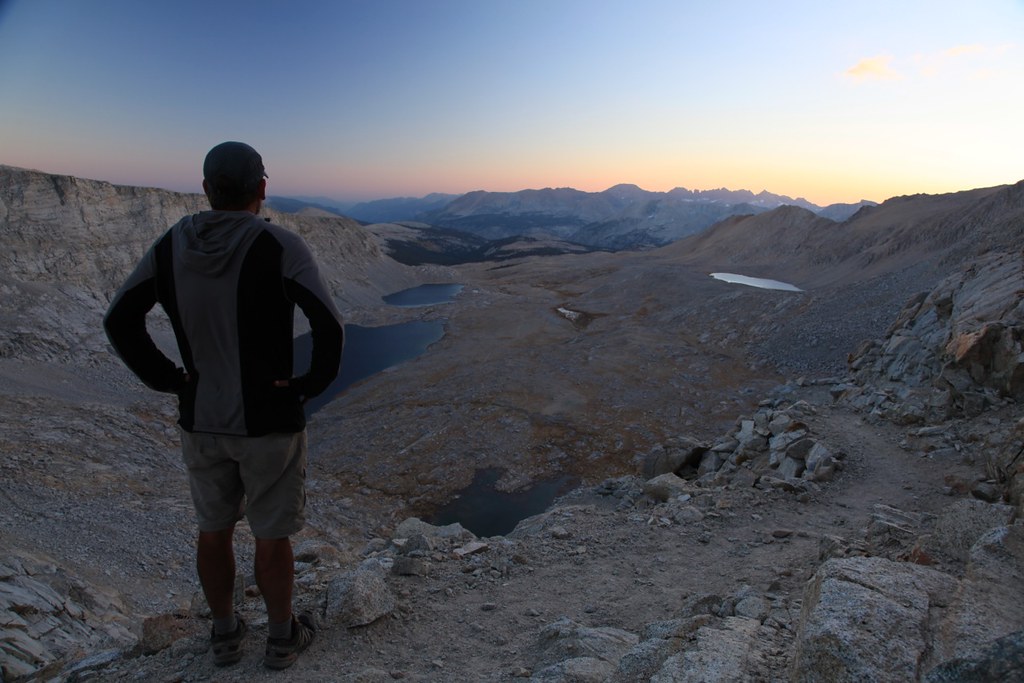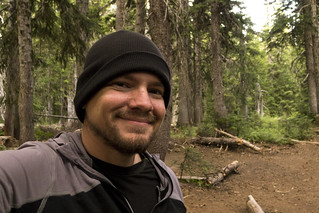 |
| (Photo: Liv hitching in Maine) |
On a long enough hike, hitching into town to resupply is almost a necessity and often a major concern for aspiring thru-hikers. The first time I stretched out my arm and put out my thumb, I felt equally nervous and excited.
A couple hundred hitches later, the nervousness dwindled to nothing, but the excitement continues. It's not simply free transportation. Something about it evokes a feeling of uncomplicated freedom. Akin to minimizing possessions to only what you can carry.
My friends and I have gotten many hitches from people who said we were the first hitchhikers they have ever picked up, so it seems we’re doing something right. Not everything here is essential for getting a ride, but they are all of the things I consider. The tips are geared toward the short hitches between trails and towns for resupplying, but most of them apply no matter where you’re hitching.
A couple hundred hitches later, the nervousness dwindled to nothing, but the excitement continues. It's not simply free transportation. Something about it evokes a feeling of uncomplicated freedom. Akin to minimizing possessions to only what you can carry.
My friends and I have gotten many hitches from people who said we were the first hitchhikers they have ever picked up, so it seems we’re doing something right. Not everything here is essential for getting a ride, but they are all of the things I consider. The tips are geared toward the short hitches between trails and towns for resupplying, but most of them apply no matter where you’re hitching.
Look for a spot where someone can easily pull over without issues or in places where it would be illegal to stop. Wide shoulders and turnouts are prime real estate for hitching. This will be the most obvious thing you'll read on this list, but also be sure you're on the side of the road where the traffic is moving in the direction you want to be going.
2. Give time for drivers to see you and brake safely
5. The Law
8. Hitch in pairs when possible
16. Wear something bright
26. When all else fails, just look as pathetic as possible
Tips for after someone has taken the bait
27. Tell them the shortest distance you’re willing to go on the hitch
Tips for when you’re in the car
29. Have a good conversation
There will be exceptions to all these tips. They are simply things that may help increase your chances of getting to where you need to go.
Hitching isn’t without risk, of course, but it’s not as dangerous as most people believe. As with everything, firsthand experience reduces your fear by making you more aware of reality.
People often say, “I wouldn’t hitch in this day and age.” Those people need to stop watching TV. The news is to reality what reality shows are to reality. Get out and see the world as it really is. Believe it or not there are fewer acts of violence today than ever before. The number of people willing to injure or murder a stranger with his thumb out on the side of the road has not gone up, in fact, it has gone down.
Actually, come to think of it, people have picked us up because they were afraid if they didn't a crazy person might. So maybe a little bit of fear in the population is good for hitchhikers.
Take precautions, but don't let a fear of hitchhiking keep you from attempting a thru-hike Besides, you may find that many of your best stories of the long hike are your hitchhiking stories.
Stand in a spot where a driver will have a few seconds to see that you’re hitching and have plenty of time to slow down. And of course, enough time to take pity on you. Few people will want to slam on their breaks or turn around to pick you up. It happens occasionally, but don’t make it a requirement.
Standing by a road sign or anything else that a driver might already be looking at, may give them an extra second to notice you.3. Put your thumb out and pointed up, if in the United States
This might seem obvious, but I mention it because the tradition of putting out a thumb is what we do in America and Europe, but it's not the standard everywhere. If you’re in another country, you’ll want to learn their gesture. For example, in Israel, hitchhikers hold their fist out with their index finger pointing towards the road.4. Hitch where traffic is slow or stopped
Such as near traffic lights or within eyesight of where people are pulling out of gas stations or parking lots. While waiting for a light or pumping gas they are more likely to notice you. Perhaps the best spot is right before a highway on-ramp.
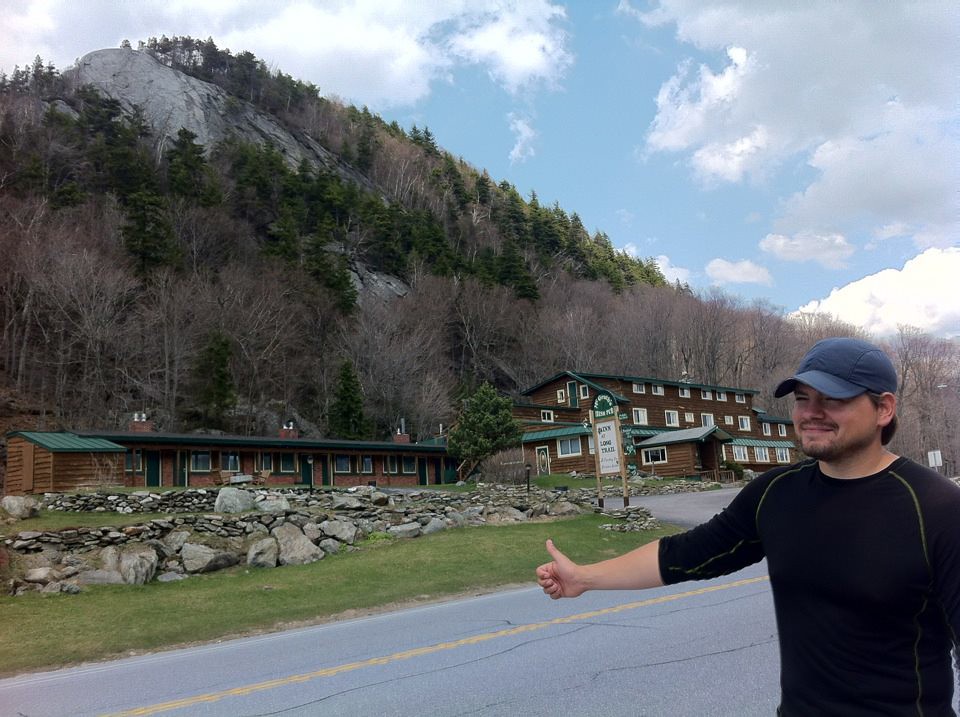 |
| (Photo: Me hitching by the Inn at Long Trail) |
The law can seem a little complicated, so I’ll try to simplify it:
Although rarely enforced, hitching is illegal in Nevada, Utah, Idaho, and New Jersey.
It is illegal to hitch on Interstates except in Texas, Oregon, North Dakota, and Missouri. This doesn’t mean you can’t hitch on the road that leads to an Interstate on-ramp though.
Although, most states prohibit standing on the road itself, it is usually okay to hitch from the shoulder. If you're unsure, stand just off to the side of the shoulder. It's safer anyway.
California, Alaska, Hawaii, Washington, Kansas, Wisconsin, Florida, Maine, New York, Rhode Island, and Massachusetts have more complicated laws that you may want to read up on. I’m not going to go into them here, but I will just say if you’re outside city limits in these states it’s usually okay to hitch. Although, failure to read up on these laws could result in a citation. It's rare, but it happens. Just remember that I warned you.
The police may ask for your ID even if you’re not doing anything unlawful. Just let them, even if you don’t technically have to identify yourself when not breaking any laws. They are usually just trying to keep people safe.
Sometimes it’s illegal to hitch on other federally-owned roads other than Interstates, like National Park roads, National Scenic Byways, and National Recreation Areas, but I’ve never had any trouble. A park ranger in Yosemite even once suggested I hitch to a certain trailhead since their buses did not go out that far.6. Minimize Turns and Simplify Your Route
The less complicated your route, the more likely a person driving by will be heading to your destination. If you’re a few blocks from the first turn, go ahead and walk that distance to eliminate it from the route. The more turns and on-ramps that you eliminate from your route, the better. By all means, stick your thumb out as you walk, but toward that better position.7. Don’t get dropped off in a bad hitching spot
If you’re going to need multiple hitches to get to where you’re going, don’t get dropped off in the middle of nowhere even if it’s closer to your destination. If they will have to drop you off between towns where there is little to no traffic, thank them for stopping, but wait for the next hitch.
Also, it’s harder to get a hitch from downtown. Traffic will be going in every direction and people aren’t necessarily driving out of town. If someone has to drop you off in a town you’re not staying in, ask to be dropped off at the edge of town instead.
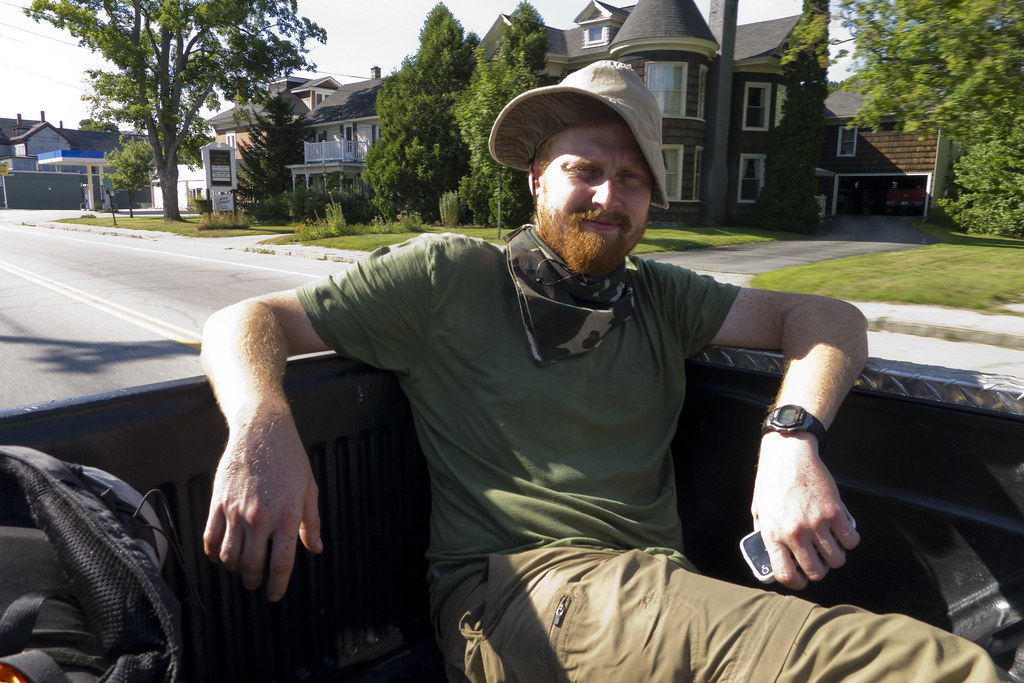 |
| (Photo: Red in the back of a pickup while hitching in Gorham, NH) |
This may also mean separating a larger group into pairs. People aren’t just giving you a ride, but your packs as well, which take up a lot of space. Hitchhiking is a numbers game, and if you’re in a big group, you’re going to have fewer vehicles pass that could possibly carry you all.
Consider having all but two standing off to the side where they aren't seen from the road. If someone stops that has the room, ask if they can take you all. Otherwise, leave the rest behind and meet back up in town.
Also, when possible, have one female to each pair. Couples and women are a lot less threatening to motorists. When I was hitching with Sixgun and Liv, there were many times when we'd put our thumbs out and a car would stop almost immediately.9. Be Happy
If you’re not happy, fake it. People don't want to pick up a stranger who looks angry or dangerous. If you’re with someone else, have a happy conversation while you’re holding out your thumb. Laugh, even if what is said isn’t that funny. Tell jokes if you have to force it. You’ll seem friendlier.
Although, don’t exaggerate your happiness or laughter. I was with another hiker on the AT trying to get a hitch and his over-sized smile and exaggerated attempts at physical humor were just creepy. Nobody stopped.10. Don’t have a knife sheathed on your belt
If you want to have one in your pocket for safety, that’s fine, although 99.9999% of people are stopping to help a fellow human, not harm them. Anyway, they are usually more afraid of you than you are of them, so put the knife out of sight.11. Make Eye Contact
Eye contact can really increase your chances of getting a ride. If someone makes that simple connection with you, I think it adds a little bit of guilt or pity to their quick decision making. In this scenario, guilt and pity are your friends.
Of course don’t stare at them in a creepy way, but give them a friendly smile. If walking, turn around and walk backwards with your thumb out when a car is coming, so you can still make that eye contact.12. Take off your sunglasses
Let them see your non-threatening face. If your face is just naturally threatening, I don’t know what to tell you.13. Don't Smoke
A lot of people don't want cigarette smoke in their cars. Smoking can definitely reduce the percentage of cars that will pick you up. And they will already have your hiker odor to deal with. If you need to smoke, ask after you're on the move if they mind.14. People Sometimes Come Back
If the speed of the car makes it obvious they are not going to stop, smile and wave anyway like you’re thanking them for the consideration. Show them this common courtesy and sometimes they will turn around and come back for you. Guilt and pity sometimes takes a second to brew.15. Look as clean as possible.
If someone thinks they’re going to have to get their car’s interior detailed after driving you three miles, they’re probably not going to stop. And if they do pick you up, actually being clean may make them tolerate taking you further. In other words, do whatever you can to freshen up.
 |
| (Photo: Red and Cocoa Toe hitching from Asheville, NC back to the Appalachian Trail.) |
When you’re buying a shirt or bandana for your hike, consider the brightest ones possible. They could help you get noticed when hitching.17. Talk to people near trailheads
If you know you’re going to try to hitch at the next trailhead, parking area, or road, start talking to day-hikers that you meet on the trail. You don’t need to ask them for a ride, but later, when they see you standing by the road with your thumb out, they will often pick you up. Even just asking them for the time or commenting on what a beautiful day it is can be enough.18. Talk to people in town
The same thing applies in town. While you’re in grocery stores, convenience stores, or restaurants, talk to people. Some business owners frown on you soliciting a ride from their customers, but you don’t necessarily have to. If you’re being friendly and talking to people, they’ll often pick you up when they see you hitching later. Just make sure they see you, hitch in eyesight of the people pulling out of the parking lot. If you see someone that you had a conversation with, wave to them so they know it's you.19. Don’t bother hitching on the side of the road at night
Instead, go to bars, restaurants, or well-lit gas stations and meet people. Again, business owners don’t want you walking up to customers to ask for a ride and most people don’t like it either. Start conversations first and mention where you’re headed. They'll see your packs, they know you're travelling. Often they will offer the ride and think it was their idea the whole time.
Besides, standing on the side of the road in the dark could be dangerous.20. Ask people about public transit
Sometimes I feel weird asking people for a ride, especially on a business's property, so I resort to a more passive indirect way of doing it. Sometimes I’ll ask the employees of the business or the locals if they know of any public transit services in the area and tell them where I’m headed. Often they’ll just offer you a ride. Remember, it’s always good to find ways to make the ride seem like their idea.21. Stand and Pace to get noticed
But don't walk away from a prime hitching spot. Only walk while hitching if you're moving to a better place. I've walked toward town while hitching while other hikers stayed back to hitch and they ended up passing me. Something you realize after walking in the woods for hundreds of miles is that cars are incredibly efficient at moving people around.22. Keep your backpack on or in plain sight
If people can see your pack or trekking poles, and you’re near a trail, they will often know your just a hiker needing to resupply in town. This means you probably aren’t going far and probably aren't there to murder anyone.23. Make Signs
I'm still not sure if signs really help, but it's something to consider. One time on the Long Trail, Red and I made one. I asked the guy, “So did the sign help out at all?”
“Actually,” he said. “I didn’t even notice the sign. The first thing I noticed was the kilt.” Red hikes in a kilt. When he bought it, I was certain we’d never get another ride again, but I was proven wrong many times.
If you’re already carrying a colorful bandana, use that instead of cardboard. It doesn’t add weight to your pack, it will stand out, and if you use cardboard people may just assume you’re "willing to work for food" instead of looking for a ride.
When making a sign, make it as simple as possible. This ensures it's easier for a driver to read and it will be reusable. It can be as simple as the letter of the direction you’re going, for example on a north/south running trail, you’ll probably only need an E on one side and a W on the other. You could also write something even more generic and reusable like, “Hiker to Town,” on one side of a bandana and “Hiker to Trailhead” on the other.
If you get too specific and write your actual destination on a sign, not only is it not reusable, but if the destination is further away or in a direction the driver isn't going, they may not bother to stop at all. And you really want them to stop. If they have already made the effort to stop, they are more likely to take you where you’re going or at least get you part of the way there.24. Consider the time of day when you’ll get to the road
Obviously, you don’t want to get to the road after dark, but get there at least an hour before dark in case you don’t get a ride right away. Think about how many miles you have to the road and how much time you’ll need in town. If you want to get back to the trail before dark, leave enough time to shop and get two hitches. Usually two or three hours is plenty unless you're in the middle of nowhere.
Also, remember that a lot more people go on day-hikes on weekends, so you are more likely to see cars parked at trailheads and so more likely to get a ride.25. Sometimes going in the wrong direction will get you to your destination quicker
If you’re in a bad spot and you can’t get a ride in the right direction. Try to also get a ride to a better hitching spot in the other direction.
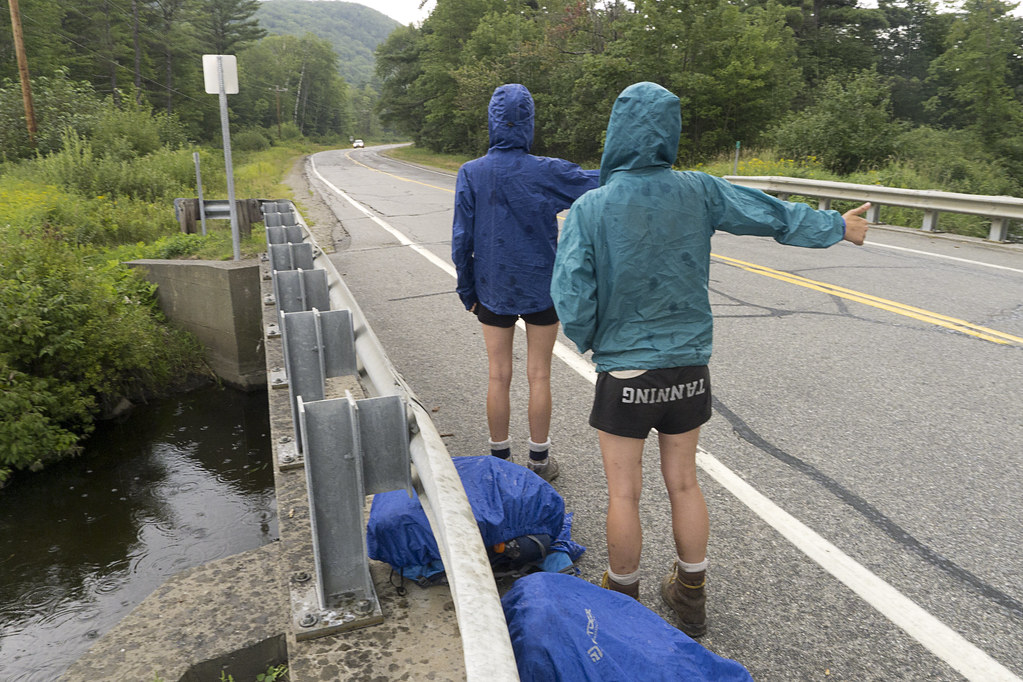 |
| (Photo: Sixgun and Liv hitching in the rain) |
Being rained on helps. So does taking off your coat and looking cold. Sometimes desperate times call for desperate measures.
Tips for after someone has taken the bait
27. Tell them the shortest distance you’re willing to go on the hitch
For example, when someone asks where you’re headed, say something like, “Well ultimately, I need to get to _______, but if you can take me to _______ that would be great!” That way they won’t feel like they’re stuck with a smelly hiker for a long time, but if they like you, they’ll usually take you further. Actually, I think everybody except two people took me the full distance even if it wasn't on their way, but in their defense both of them were expected to appear in court.28. Be leery of putting your pack in someone’s trunk
They might just pull away with all your gear when you get out. Either on accident or on purpose. Just imagine being dropped off by a trailhead and helplessly watching all your gear roll away. Instead, put your pack on your lap, or if you're in the backseat set it right next to you. If you’re hiking with someone else, have a rule that one person stays in the car until the other has pulled the packs out of the trunk.
Tips for when you’re in the car
29. Have a good conversation
Don’t just sit there quietly the whole time. That’s weird and they will be less likely to take you that extra distance. Ask them where they are from. Be happy. Tell them about your travels. If they enjoy your company, they are more willing to take you the extra mile or pick you up again if they see you hitching back to the trail.
Tell them interesting stories, but try to get them to talk about themselves. Not only are some of these people really interesting, but people like talking about their lives. If they are enjoying the conversation, they will usually drive you further.
I’ve had many people go out of their way to take me where I needed to go. After finishing the John Muir Trail, a driver drove me two hours out of his way to take me back to my car in the Yosemite Valley (four hours round trip). We had a great conversation. Not only that, but I’ve had people drive around to look for me later to take me back to the trailhead.
Never talk about anything even remotely controversial. This should be a given, but if the driver brings up the topic, just smile and nod or try to change the subject. I know some people can’t help but argue, but you have to fight the impulse if you want them to take you further or pick you up again later. Or just agree with them, if doing so doesn't kill something dear inside of you.30. Be courteous
Apologize for the hiker smell and thank them for the ride. These people are doing you a huge favor and all you’re offering is your stench. Make sure they know how grateful you are for their kindness. When people think you like them or appreciate them in anyway, they will like you almost 100% of the time. I’ve had people wait for me to finish shopping and drive me back to the trail. People are just amazing sometimes. Make sure they know that.In Conclusion
There will be exceptions to all these tips. They are simply things that may help increase your chances of getting to where you need to go.
Hitching isn’t without risk, of course, but it’s not as dangerous as most people believe. As with everything, firsthand experience reduces your fear by making you more aware of reality.
People often say, “I wouldn’t hitch in this day and age.” Those people need to stop watching TV. The news is to reality what reality shows are to reality. Get out and see the world as it really is. Believe it or not there are fewer acts of violence today than ever before. The number of people willing to injure or murder a stranger with his thumb out on the side of the road has not gone up, in fact, it has gone down.
Actually, come to think of it, people have picked us up because they were afraid if they didn't a crazy person might. So maybe a little bit of fear in the population is good for hitchhikers.
Take precautions, but don't let a fear of hitchhiking keep you from attempting a thru-hike Besides, you may find that many of your best stories of the long hike are your hitchhiking stories.
A Backpacker's Life List by Ryan Grayson is licensed under a
Creative Commons Attribution-NonCommercial-NoDerivs 3.0 Unported License.
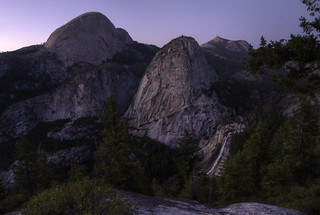
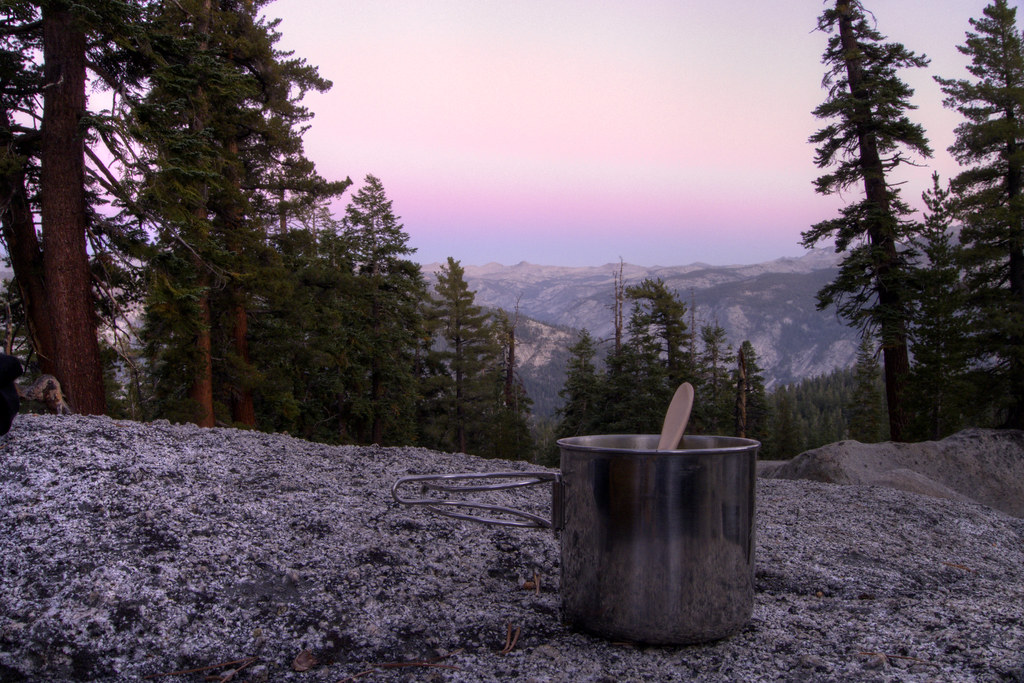
com-s.jpg)
com-s.jpg)
com-s.jpg)
com-s.jpg)
